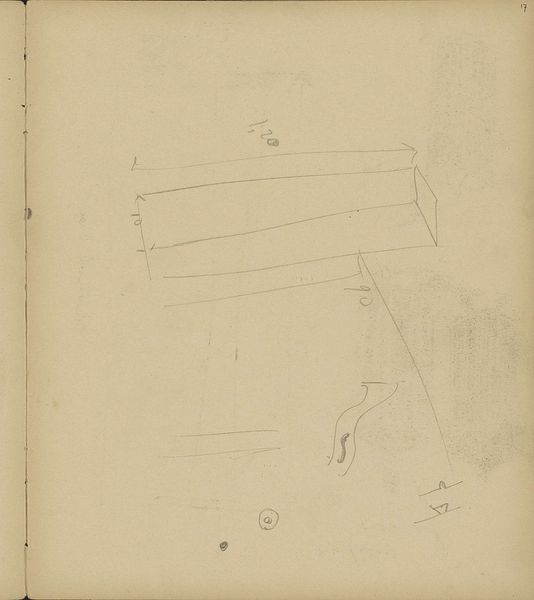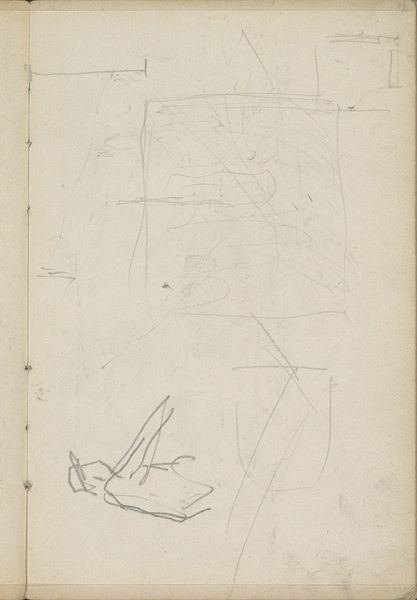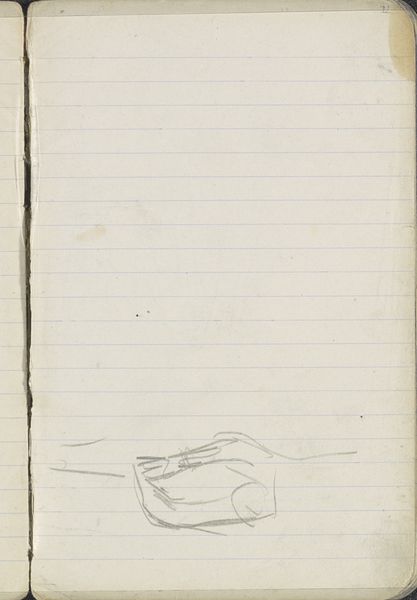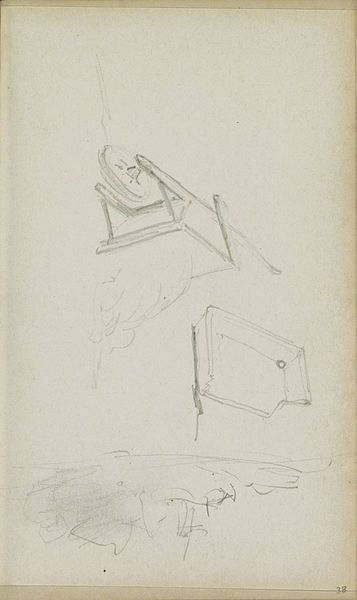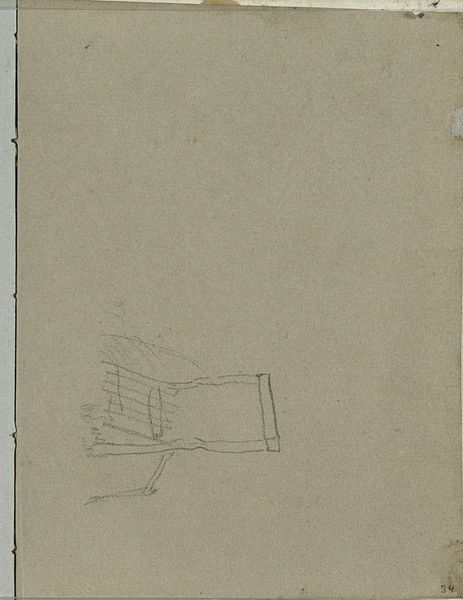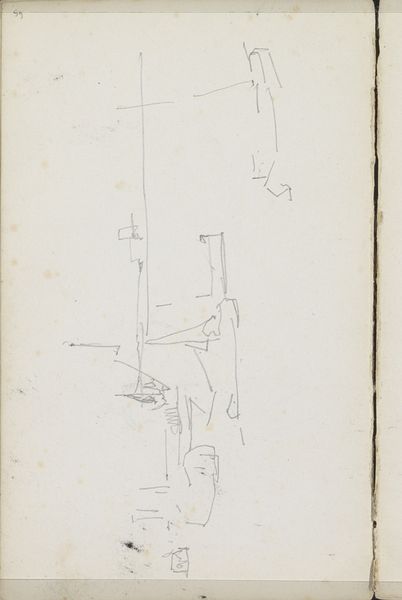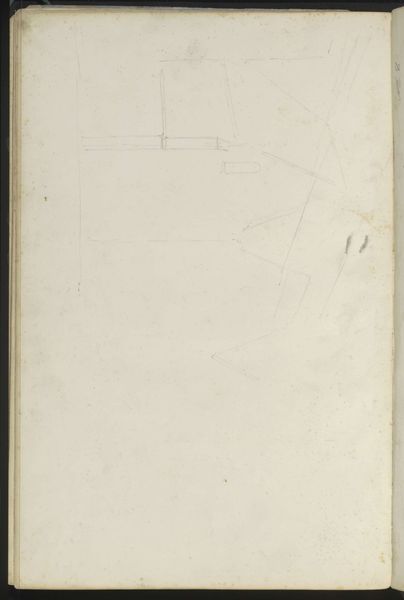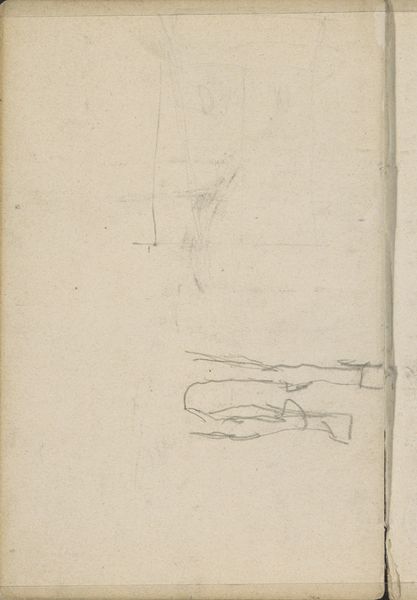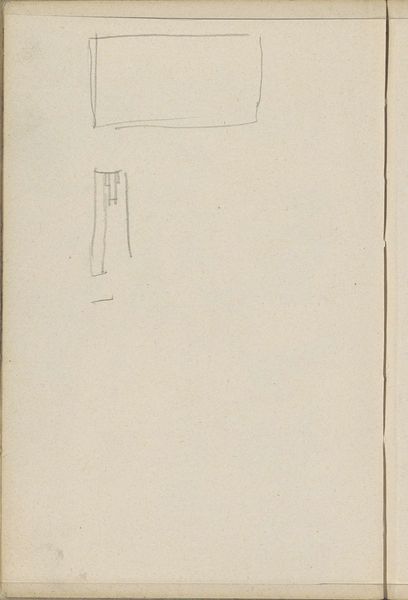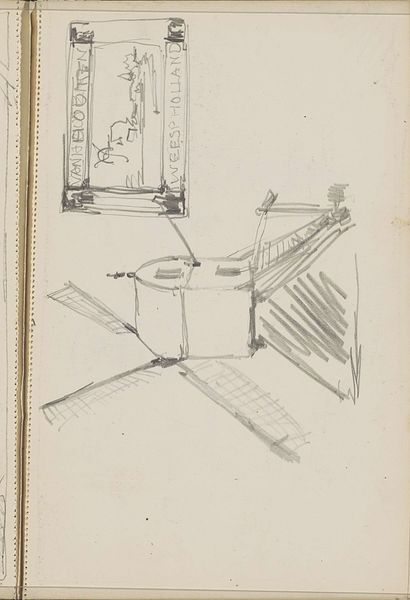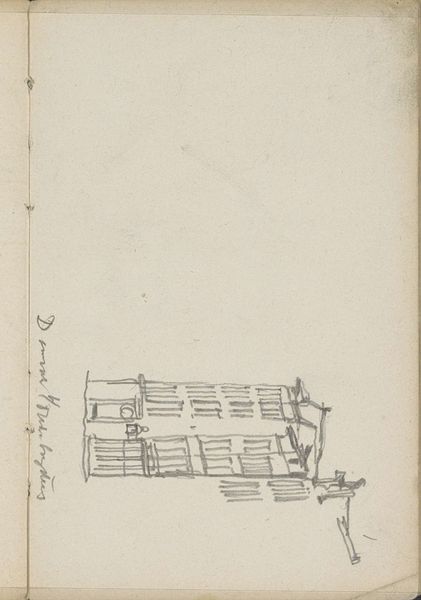
Copyright: Rijks Museum: Open Domain
Editor: So, this is "Handkar," a pencil drawing on paper from around 1903 by George Hendrik Breitner, currently at the Rijksmuseum. It’s quite sparse, almost like a technical drawing, yet… lonely somehow? What do you see in this piece beyond the simple representation of a handcart? Curator: It's fascinating how Breitner captures the mundane, isn’t it? But let's think about what this handcart *represents* beyond just its physical form. Consider the social and economic context of early 20th century Amsterdam. Who would have been using this cart? What kind of labor might it signify? Editor: Hmm… I suppose it speaks to working-class life, perhaps small businesses or even itinerant vendors. But it’s just *one* cart, alone on the page. Is Breitner commenting on something specific, like…the precarity of that existence? Curator: Precisely! Breitner was deeply interested in depicting the lives of ordinary people, especially those marginalized by society. He wasn’t just painting pretty pictures; he was engaging with social realities. The solitary nature of the cart might highlight the isolation and struggles of the individual laborer within a rapidly changing urban landscape. Think about how industrialization impacted those who still relied on manual labor. How does that shift affect someone's identity? Editor: So, it’s less about the object itself and more about what it symbolizes within the larger socio-political framework of the time? The absence of the person pushing or pulling makes the handcart a stand-in for larger conversations about class, labor and identity, then? Curator: Exactly! And that raises questions about visibility and representation, who gets seen and how, even today. Considering art as a form of social commentary really enriches the experience. Editor: That's definitely given me a new perspective. I'll never look at a "simple" drawing the same way again. Curator: And hopefully it encourages us to critically examine the world around us and consider the unseen narratives embedded within seemingly ordinary objects and lives.
Comments
No comments
Be the first to comment and join the conversation on the ultimate creative platform.
